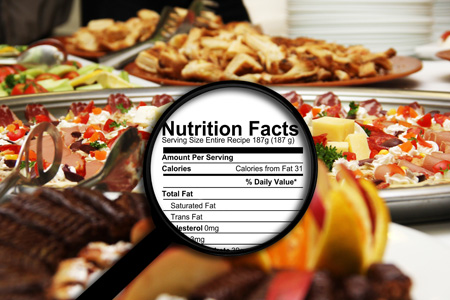The FDA, in an effort to provide consumers with more and better information on food products, requested public comments on the term “natural” on food labeling and intends to redefine the term “healthy” for food claims. The intent behind the FDA’s recent actions is to ensure that information provided to consumers by food manufacturers is in-line with the latest scientific understanding about food components, and advances in dietary sciences.
The end goal: Help consumers make informed choices about what they eat.
Ambiguity dogs the Terms “Natural” and “Healthy”
The FDA has a difficult task ahead since defining words such as “natural” or “healthy” is filled with ambiguity. The FDA has not fared well with defining the term “natural” previously. In 1991, the agency requested public comments on the definition of the word “natural” to reduce the ambiguity surrounding it, but was unsuccessful. In 2013, a large number of suits were filed against food manufacturers, alleging the use of the term “natural” in food labeling was misleading under various state laws. State courts looked to the FDA for a determination of this issue, but the FDA declined to define the term. In 2015, the FDA requested public comments again on whether it should define the term “natural” and if so, how.
The term “natural” does not fit anywhere in the Nutrition Labeling and Education Act (NLEA) of 1990. However, under the NLEA, the term “healthy” has been defined. According to the FDA, foods using the claim “healthy” on food labels imply that the food’s nutrient content may help consumers maintain healthy dietary practices, which means the food must meet the nutrient content claim regulations under 21 C.F.R. § 101.13(b)(2)(ii). Foods that contain more than a particular amount of fat or sodium cannot use the term “healthy”.
A “Healthy” Claim is Affected by the Type of Fat Content in Food
The FDA sent a letter to the CEO of Kind, LLC, manufacturers of protein bars, explaining that the label violated the agency’s regulations for the term “healthy” because it contained too much saturated fat to be labeled healthy based on the old regulations, 21 C.F.R. § 101.65. After the company’s response that the main source of fat in their product was derived from nuts, and recent findings that suggest saturated fats derived from nuts may be healthy, the FDA decided to open public comment on the redefinition of the term “healthy”.
Serving Sizes Reflect New Consumption Patterns
The FDA also updated the Nutrition Facts label for listing the amount of calories and nutrients on packaged foods. This is a further step towards providing consumers reliable information about calorie and nutrient food content. Studies show that consumers do rely on the ‘Nutrition Facts’ label when making purchase and consumption decisions. Under the new label, serving sizes have been updated to reflect changes in the amounts people consume in today’s time. The increased serving size doesn’t reflect what people should be eating, but it does offer consumers a better idea of the calories, fat and nutrients in an average portion. Manufacturers are also required to include Vitamin D and potassium and the update no longer requires vitamins A and C to be included and updates Daily Values. The update also requires manufacturers to list added sugars and some changes to the label design that have been made to make information more accessible to consumers.
The FDA’s regulatory changes have still a lot of uncertainty attached to them, and food manufacturers need to be aware of how the regulatory changes will affect them. Expert speaker Norma Skolnik is conducting a session, providing an overview of current FDA regulations on use of the term “healthy” as per FDA’s 1993 Final Rule and why the agency intends to redefine the term in view of the evolving science related to public health recommendations for dietary intake.


